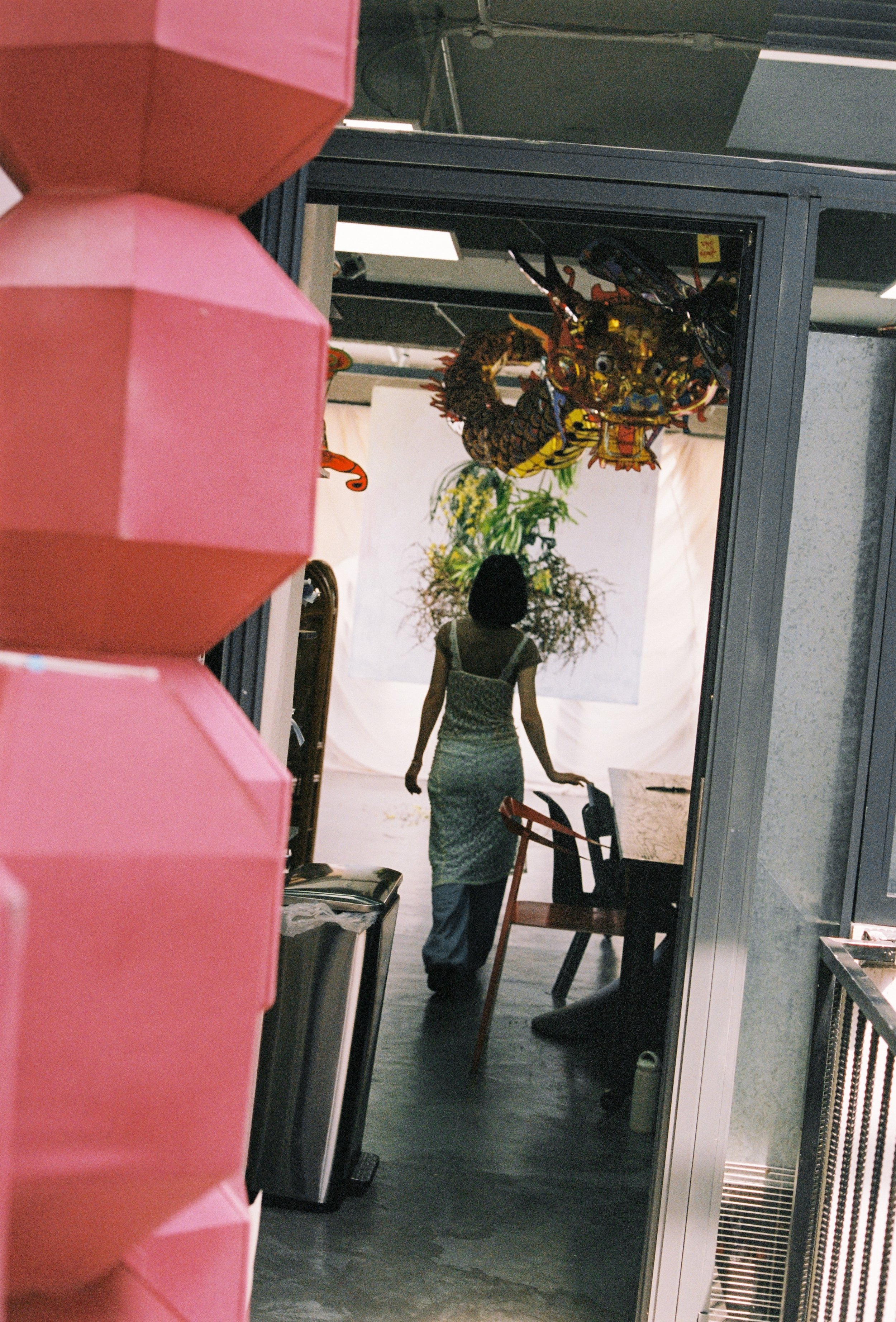I first stumbled on The Bloom Saigon’s work at a cafe during my first few weeks in Ho Chi Minh City. It was unlike anything I’d ever seen—a futuristic floral installation where electronic circuits breathed life into blossoms. I’d been curious about Phuong, the artist behind it, ever since. And because I’ve never been good at ignoring my curiosity, it eventually led me to a quiet, tree-lined pocket of the city, where Phuong’s studio sat among homes and shaded streets. It was a Sunday, already thick with heat, and I was grateful not only for the iced americano she handed me at the door but for the morning we were about to share.
It wasn’t long before Phuong began opening up about her story, starting with how, for much of her twenties, she questioned her place in the world. What was she meant to do? What kind of impact was she supposed to make? Who was she, really? And as a woman, how could she carve out a path that was truly hers—free from society’s weighty demands and expectations? It was funny how quickly our conversation began to feel like one I’d have with myself. We’d plunged straight into the deep end, my coffee still barely touched!
Then Phuong said something that struck me: finding yourself, she said, is harder than following a prescribed career path, like that of a doctor or even a designer. You can follow a set of steps—with years of schooling and defined milestones—but figuring out who you truly are, and what you’re meant to do, that’s a journey without a blueprint. It’s a search for direction when you may not even know where to begin.
For Phuong, clarity did come, by way of her connection with nature. And like flowers, she believes we each have our season of bloom—when we feel most aligned with ourselves and our purpose, and when we are happiest and most fulfilled. When flowers blossom, their beauty is so striking that nothing else matters. Not how brief the moment is, not what came before or what follows. Now, as we sat together, she told me: this is her season.
That morning, she created KÉN (Cocoon) and TỔ CHIM (Bird Nest)—pieces that embodied everything we had spoken about. Read on for more about KÉN from the designer herself.
“Observing the life cycle of a silkworm, I suddenly realized that our journey of self-discovery and growth mirrors that of a cocoon. As a typical Asian girl, the family core has always been my foundation, guiding every turning point in my gap life.
KÉN is transformation. It’s the act of shedding layers, breaking free, and stepping into the light. From the fragile beginnings of a cocooned being, we learn to move, to let go, and to trust in ourselves. But KÉN is also love. It holds the warmth of family, the tenderness of a mother’s embrace, and the ever-evolving search for one's true self. “Become Yourself" is the heart of KÉN. Because perhaps, success or becoming ‘someone’ is not the hardest thing. The real challenge is becoming yourself—living with gratitude and happiness.
The KÉN series is a quiet reminder of our journey to selfhood in a world of infinite identities:
Stage 1: Nesting, incubation, protection, warmth.
Stage 2: Stirring, unraveling, emerging, releasing.
Stage 3: Shedding, expanding, soaring.
The life cycle of a silkworm has taught me that to grow truly, we must be willing to shed what holds us back. We must face the unknown, even when it feels daunting. While creating KÉN, I found myself reflecting on the gap in life, those moments when we must decide, step forward, and embrace change on our own.”
—Phuong
Instagram @thebloomsaigon
Vulnerable Works is about the quiet courage of making. At its core, this project is deeply personal. Through these conversations, I look for perspective and ways to navigate feelings of doubt, uncertainty, and the tension between vision and reality. These stories weave my reflections with those of the artists, offering a glimpse into the process, the trust it demands, the triumphs that keep us going, and the vulnerability inherent in creating. Sometimes I pick up a little more—the songs that fill artists’ studios, bits of their daily routines—but I always return with photographs.



























